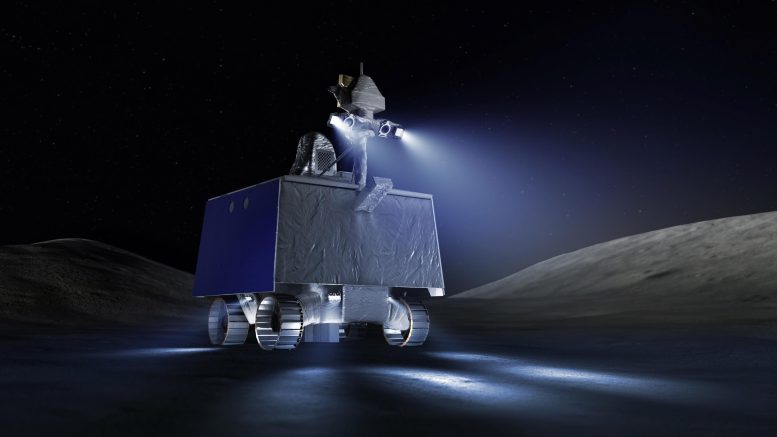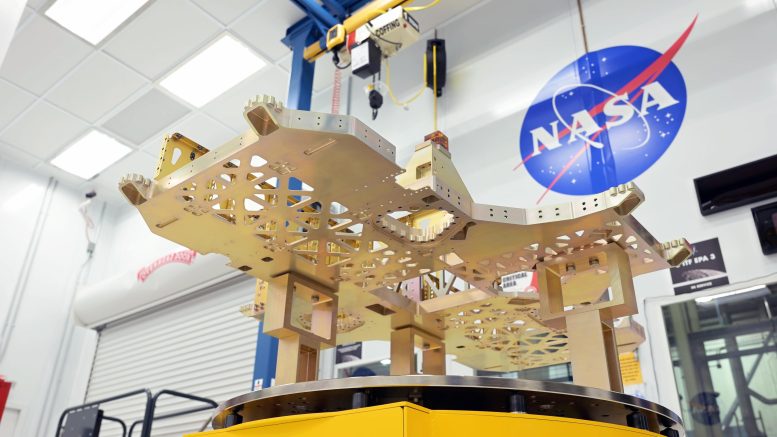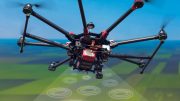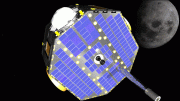
An artist’s concept of the completed design of NASA’s Volatiles Investigating Polar Exploration Rover, or VIPER. VIPER will get a close-up view of the location and concentration of ice and other resources at the Moon’s South Pole, bringing us a significant step closer to NASA’s ultimate goal of a long-term presence on the Moon – making it possible to eventually explore Mars and beyond. Credit: NASA/Daniel Rutter
NASA’s first robotic lunar rover is officially coming together and the team building it is over the Moon.
“I’m super excited…it makes me very proud of all the time and effort the team has invested to get this far,” said David Petri, system integration and test lead for the Volatiles Investigating Polar Exploration Rover (VIPER). The team recently began assembling the 1,000-pound rover at NASA’s Johnson Space Center in Houston.
Engineers have affixed the rover’s lower chassis plate and the lower parts of the frame that will support all of VIPER – from the bottom of its wheels to the tip of its headlights. It all now sits atop a set of risers on a specialized lift table in a clean room at Johnson.
“We’ve just completed the first few steps integrating rover components that will one day be on the surface of the Moon,” said Petri. “Hardware is coming in from all over the world, including some manufactured at several NASA centers – it’s really ‘go’ time.”

In a clean room at NASA’s Johnson Space Center, the engineers have installed the lower chassis plate and lower frame parts that will serve as the support structure for VIPER. This includes everything from the bottom of its wheels to the tip of its headlights. The entire assembly is now elevated on a set of risers using a specialized lift table. Credit: NASA
Over the next few months, engineers and technicians will continue the build-up, adding subsystems such as avionics, power, telecommunications, mechanisms, thermal systems, and navigation systems onto the rover, including the specialized scientific instruments and drill that will perform the primary objectives of the VIPER mission. Once integration is complete, they will put the completed rover through a series of stressful function, performance, and operational tests, followed by vibration, acoustic and thermal-vacuum environmental tests ensuring the rover is mission-ready.
Meanwhile, at NASA’s Ames Research Center in California’s Silicon Valley where the mission is managed, software engineers continue developing and testing the brains of the rover, before it is integrated with the rover hardware. And the VIPER science team continues to simulate the fast-paced science operations in preparation for a target lunar landing date of November 10, 2024. Scientists chose the date to ensure that VIPER, a solar-powered rover, receives the most sunlight possible as it makes frequent stops to study and explore a portion of the large flat-topped Moon mountain Mons Mouton. Using a target landing date, the rover’s science team can continue planning the best path for the rover to take to maximize science results while outrunning cold and dark shadows.
The successful arrival of the first flight science instruments is just the beginning – with more expected to arrive soon, and many other parts staged in preparation for integration – NASA is on track to deliver VIPER in mid-2024 to Astrobotic of Pittsburgh, ahead of a launch in late-2024. Astrobotic is scheduled to deliver VIPER to the Moon’s South Pole aboard its Griffin lander as part of NASA’s Commercial Lunar Payload Services (CLPS) initiative.
Once on the Moon, VIPER will explore and study the environment to better understand the origin and distribution of lunar water and other potential resources. Such findings could be used to help determine where and how the Moon’s resources can be harvested to sustain humans on the Moon for the Artemis program and future human space exploration in deep space.
The Volatiles Investigating Polar Exploration Rover (VIPER), developed by NASA, is a mobile robot that will venture to the South Pole of the Moon to examine the location and density of water ice, which could be utilized to sustain human exploration on the Moon, Mars, and beyond. This mission marks the first resource mapping endeavor on a celestial body beyond Earth.
Scheduled for dispatch to the lunar surface in late 2024 through NASA’s Commercial Lunar Payload Services (CLPS) initiative, VIPER will play a crucial role in the agency’s objective to collaborate with commercial lunar delivery services. This involves utilizing emerging commercial landers to transport ready-to-fly payloads to the Moon’s surface.









Be the first to comment on "NASA Begins Building VIPER – Its First Robotic Moon Rover"